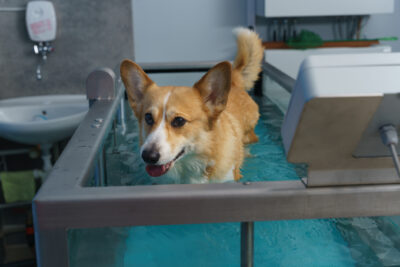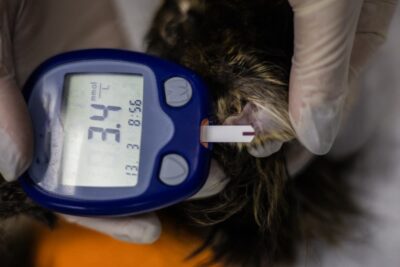Walking Your Dog in the Winter: 6 Tips
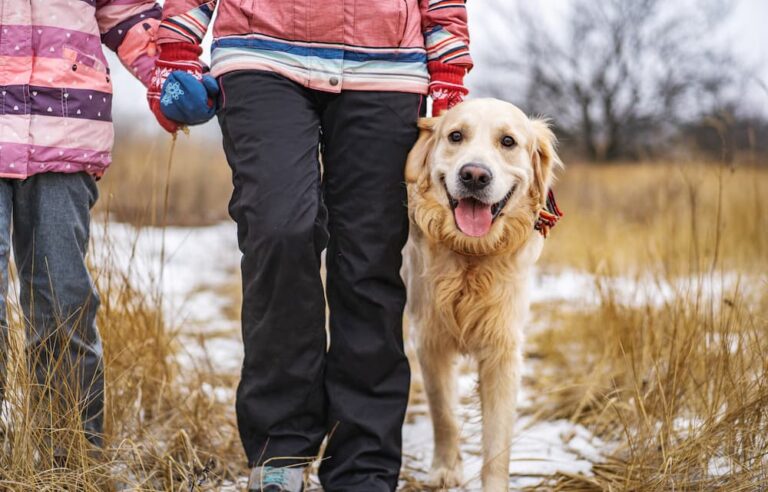
As fall shifts toward winter and daily walks with your dog grow darker and colder by the day, you might find yourself skipping dog walks altogether. If so, you’re not alone. According to a 2021 study published in the journal Animals, pet parents are 48 percent less likely to exercise their dogs in cold weather, and 64 percent less likely to take them out when it’s icy (1).
When seasons shift, so do our routines, but daily walks provide both exercise and mental stimulation, something all dogs (and people!) need to thrive. It’s safe and beneficial to stick to those winter walks as long as you follow some winter walking guidelines and pay close attention to your dog during walks in cold weather.
How Cold Is Too Cold to Walk a Dog?
If you’ll be out for longer periods of time (walks of an hour or more), most dogs are comfortable in temperatures in the 40s, unless they are very old, very young, or have a health condition. Small dogs, senior dogs, dogs with short or thin coats, and those with low body fat will likely appreciate a coat or sweater, even in 40-degree temperatures.
The duration of your walk is a key consideration. According to emergency veterinarian Holly Dutton, DVM, it’s more about adjusting the length and intensity of the walk rather than skipping it completely. She says that most healthy dogs can safely walk for short periods of time in temperatures down to around 20 degrees Fahrenheit (-6 degrees Celsius), especially if they’re active and have a thicker coat.
“Below that, risk increases—especially for small, short-haired, very young, very old, or sick dogs,” says Dr. Dutton, who is medical director at VEG ER for Pets in North Tampa, Florida. “Wind chill and dampness make it feel colder, so those factors matter, too.”
When it’s below 20 degrees Fahrenheit, keep walks short, stick close to home, and dress your dog in a coat or sweater. “Below 0 degrees, consider just potty breaks and indoor play instead,” Dr. Dutton says.
Walking Dog in Winter: 6 Tips
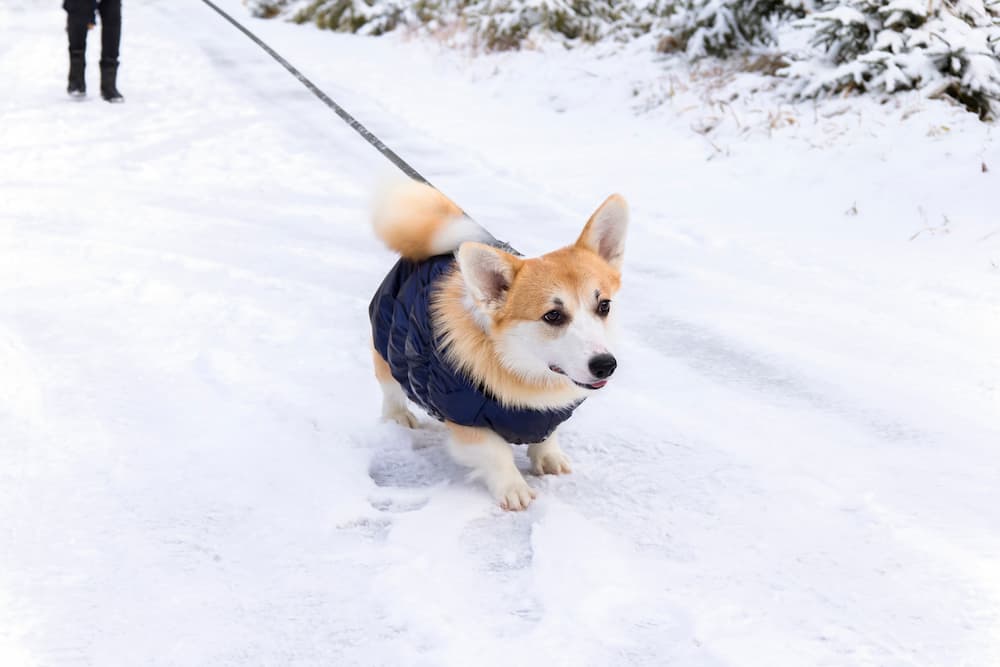
Most dogs can stick to their walking routines in winter with a few adjustments. To keep winter walks with your dog safe and enjoyable, consider these cold weather dog walking tips:
Bundle up your pup
Your walk will be more comfortable—and enjoyable—if your dog stays warm. A dog coat or sweater is important for small dogs, senior dogs, puppies, dogs with short, thin coats, and dogs with low body fat. Examples of dog breeds that need coats or sweaters include Chihuahuas, Toy Poodles, Maltese, Yorkshire Terriers, Italian Greyhounds, Papillons, Dachshunds, Whippets, Miniature Pinschers, French Bulldogs, Boston Terriers, Doberman Pinschers, Dalmatians, Greyhounds, Boxers, Great Danes, Weimaraners, Vizslas, and Pit Bulls.
On the flip side, some breeds were made for cold weather and might find dog coats or sweaters too hot, even in the cold and snow. Most Northern breeds and many working breeds with thick double coats are happy as clams in cold temperatures. Examples include Siberian Huskies, Malamutes, Samoyeds, Keeshonds, Newfoundlands, Saint Bernards, Bernese Mountain Dogs, and Great Pyrenees.
Protect your dog’s paws
Paw protection is always helpful, especially if you walk in snow, if salt or ice melt is on the ground (it can burn paw pads), or if your dog’s paws tend to crack or bleed in winter. Although Dr. Dutton says dog booties are the best protection, paw balms can also help by creating a barrier against salt and moisture. Always wipe your dog’s paws after walks to remove salt or ice melt chemicals, then dry them thoroughly. You should not let your dog lick ice melt or salts off their paws.
If your dog has long fur on their paws between their toes, snow or ice balls can sometimes accumulate, making it uncomfortable or even painful to walk. You can ask your groomer to do a paw trim, but make sure the hair is not trimmed too short. Having some hair between the toes protects your dog’s paws and provides natural insulation. Trim hair just enough so it’s flush with the paw pads.
Take shorter, more frequent walks
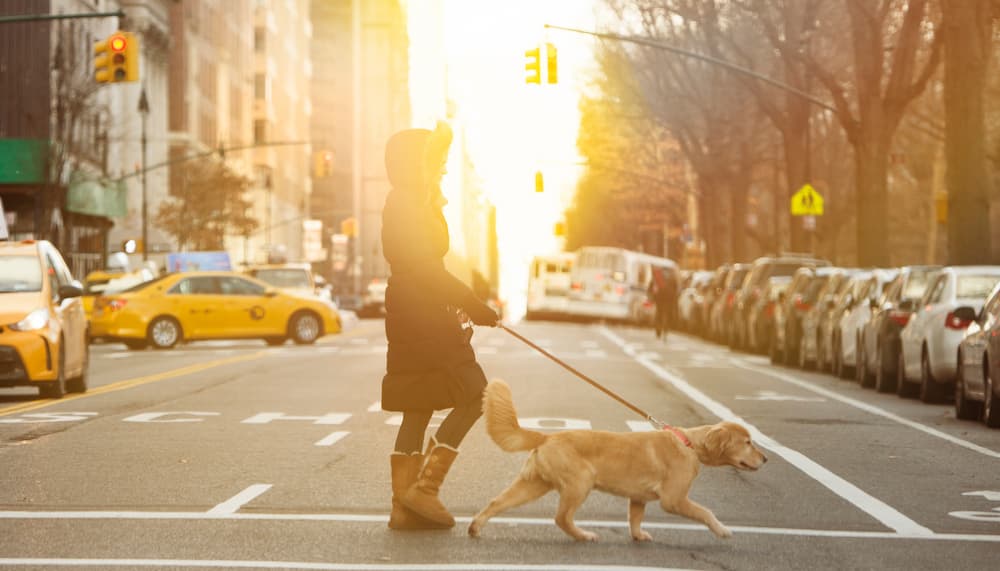
The longer you stay outside, the colder you both will get, which can make walks miserable rather than enjoyable. Instead of heading out for an hour-long walk and stumbling back inside with numb feet and hands, try breaking it up into two 30-minute walks spaced an hour or two apart. When temperatures are colder or if it’s snowing, try three 15- or 20-minute walks.
Walk during the warmest hours
Avoid long walks before 10 a.m. and after sunset, when temperatures are the coldest and the ground is covered in frost or ice. If possible, plan on walking your dog during the warmest part of the day—usually between 2 p.m. and 4 p.m. This is not only the warmest and most comfortable time to walk, but the ground is typically less icy and there’s more light, making you both more visible to cars, bikes, and other traffic.
Don’t let your dog eat dirty snow
Lots of dogs love to chomp on snow during winter walks. It’s safe for your dog to consume small amounts of fresh, clean snow, but don’t let them eat dirty-looking snow, which can be contaminated with salt, ice melt chemicals, or other toxins. Even with clean snow, eating too much can cause some problems, including an upset stomach or a dangerous drop in body temperature, so do your best to limit your dog’s snowy snacks.
Watch for signs that your dog is too cold
Dogs can’t tell us when they’re feeling too cold. Watch them closely so you can head inside to warm up if they start getting chilled. Dr. Dutton shares these warning signs your dog is getting too cold:
- Shivering or trembling
- Lifting their paws off the ground or refusing to walk
- Whining, slowing down, or looking anxious or worried
- Standing with a hunched posture, possibly with a tucked tail
- Seeking warmth by huddling close to your legs
Dog Walking Safety Winter: Other Advice
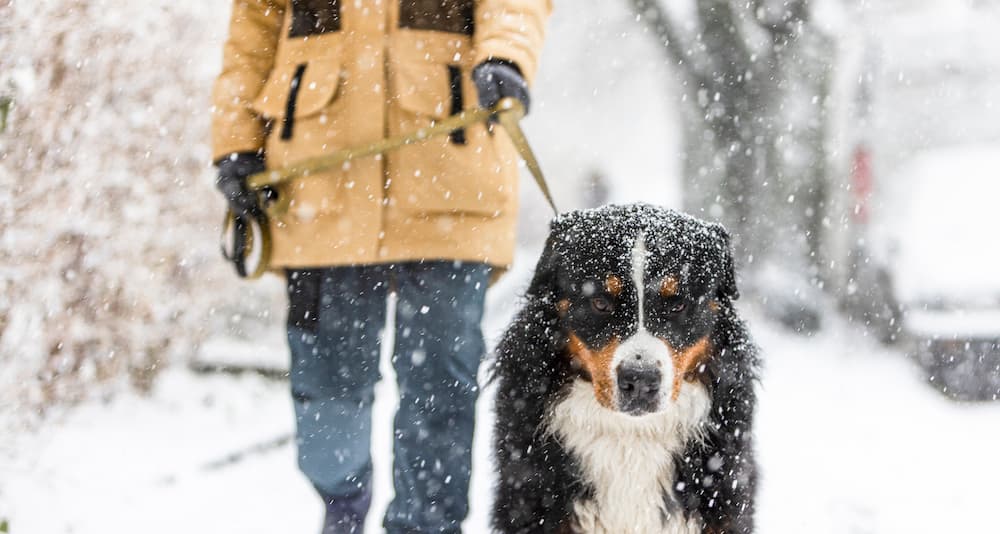
Walking dogs in the winter might require more thought and effort, but it’s possible to keep up your dog’s exercise routine even when temperatures drop. Walking dogs in cold weather, snow, and ice is not without its risks. Dr. Dutton points out these winter dog walking safety concerns:
- Frostbite and hypothermia in extreme cold
- Paw injuries from ice or salt
- Slips and falls on ice (for both you and your dog)
- Toxicity from licking paws after contact with antifreeze or de-icing chemicals
- Getting lost in a snowstorm or whiteout if your dog is off leash
Both you and your dog can enjoy safe walks during the cold months by keeping our winter dog walking safety tips in mind and using common sense. If it feels too cold for you, it’s likely too cold for your dog. You can also ask your vet for advice if you’re unsure about what is appropriate for your individual dog. Remember, never leave your dog outside in the cold for long periods of time—especially alone.
On days where it’s too cold, snowy, or icy to go out, stick to quick potty breaks in the yard and get creative with some indoor opportunities for dog exercise and mental stimulation. You can roll a ball down the stairs for your dog to race down and retrieve, play a game of fetch or chase in a long hallway, create a mini agility course in your living room, or break out some puzzle toys for your dog to figure out. You could also consider indoor doggy daycare or trips to pet stores to get your dog some activity outside of the home.
Simply training your dog a new skill tires their brain out so much, it’s almost like going for a run! Pick something fun like speak, roll over, or high five, and have a blast with your pup while staying warm inside.
Reference:
- Hall, Emily J., et al. “Exploring Owner Perceptions of the Impacts of Seasonal Weather Variations on Canine Activity and Potential Consequences for Human–Canine Relationships.” Animals, vol. 11, no. 11, Nov. 2021, p. 3302, https://doi.org/10.3390/ani11113302.

